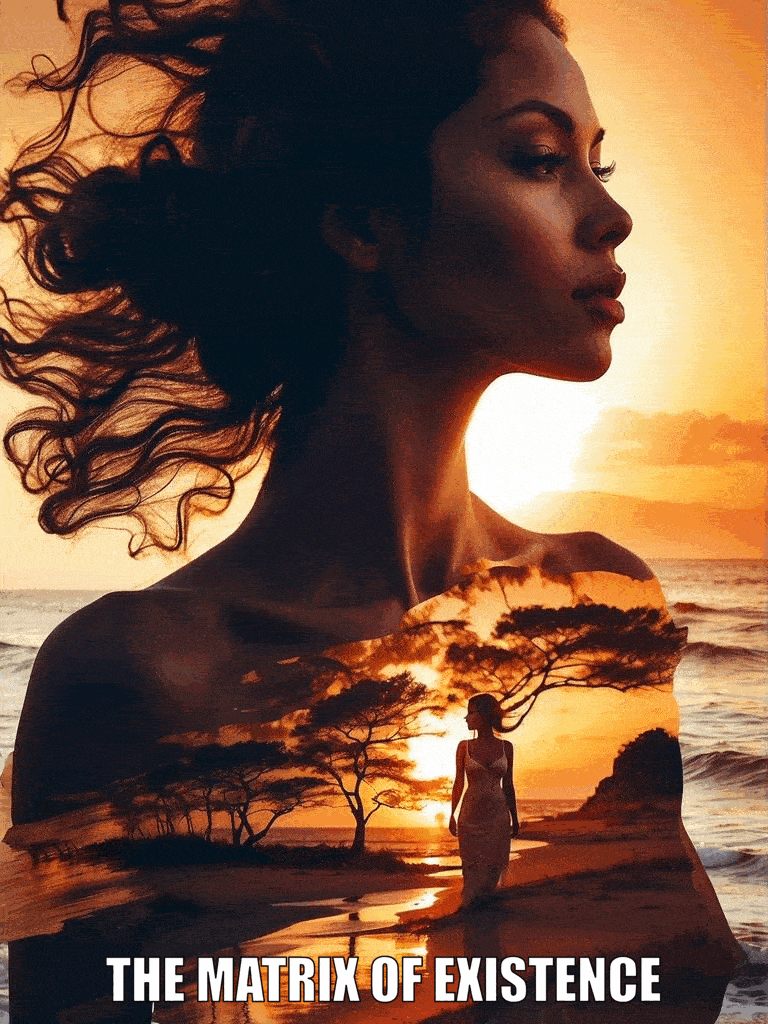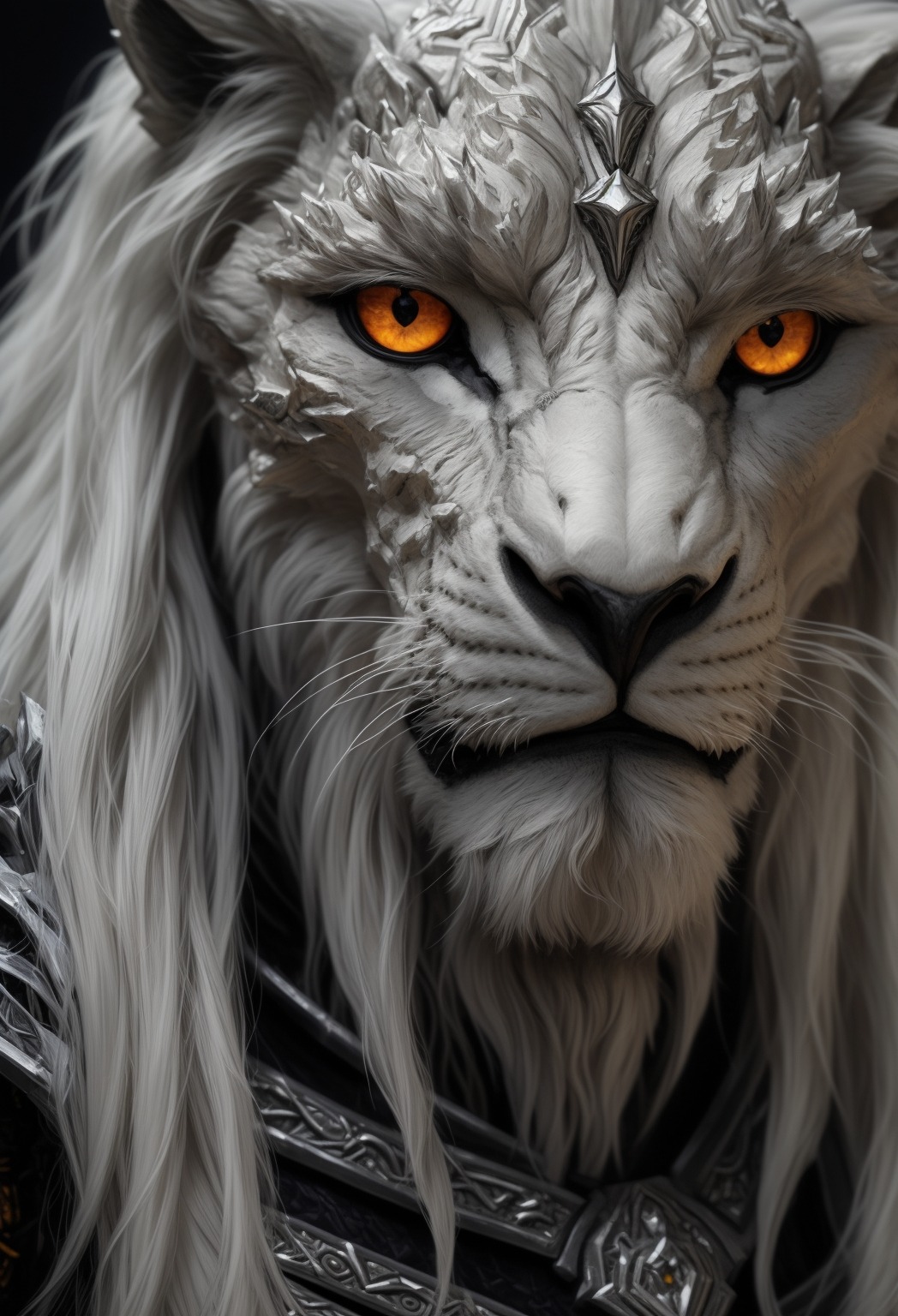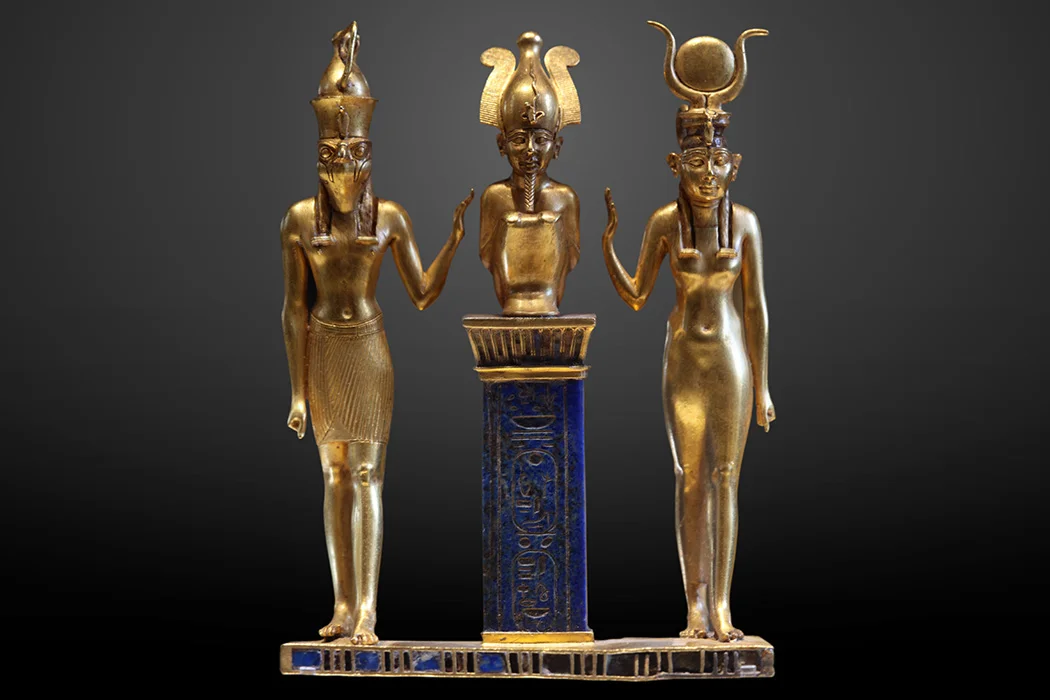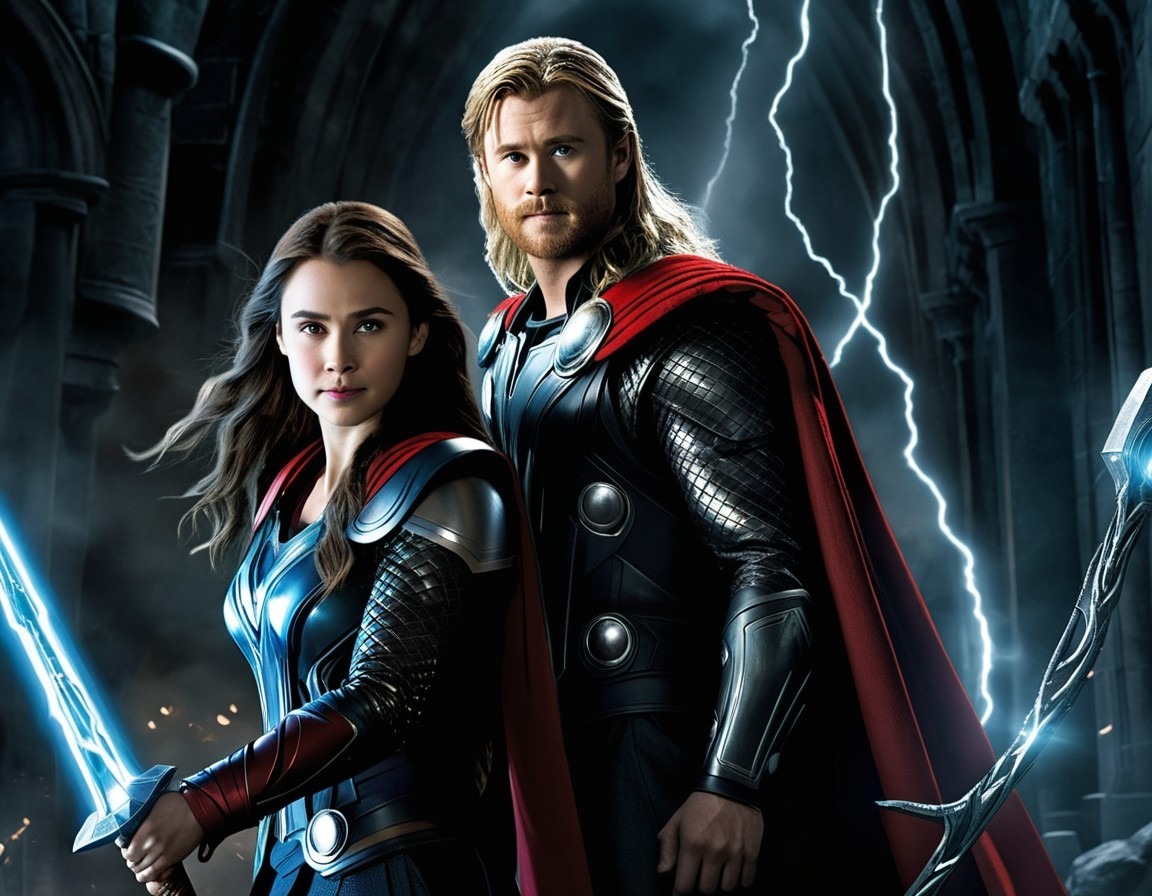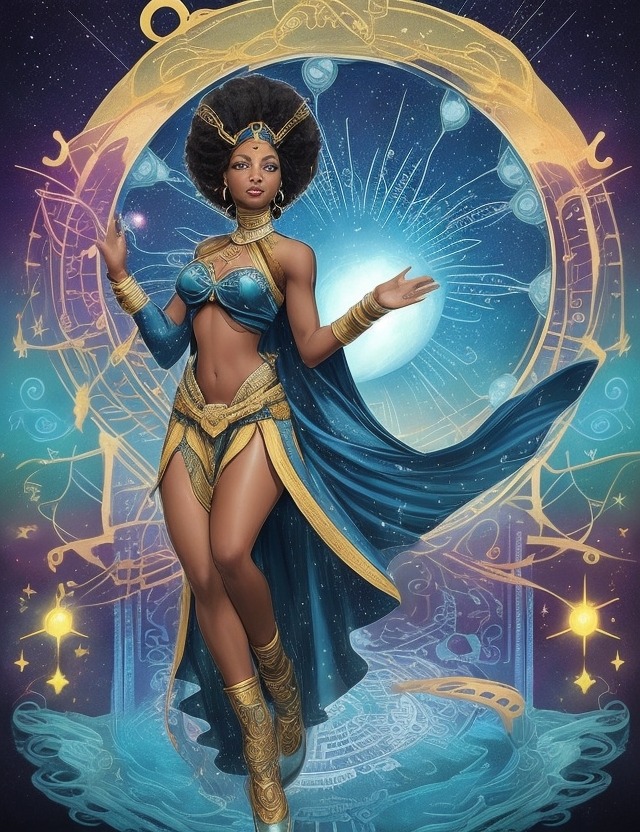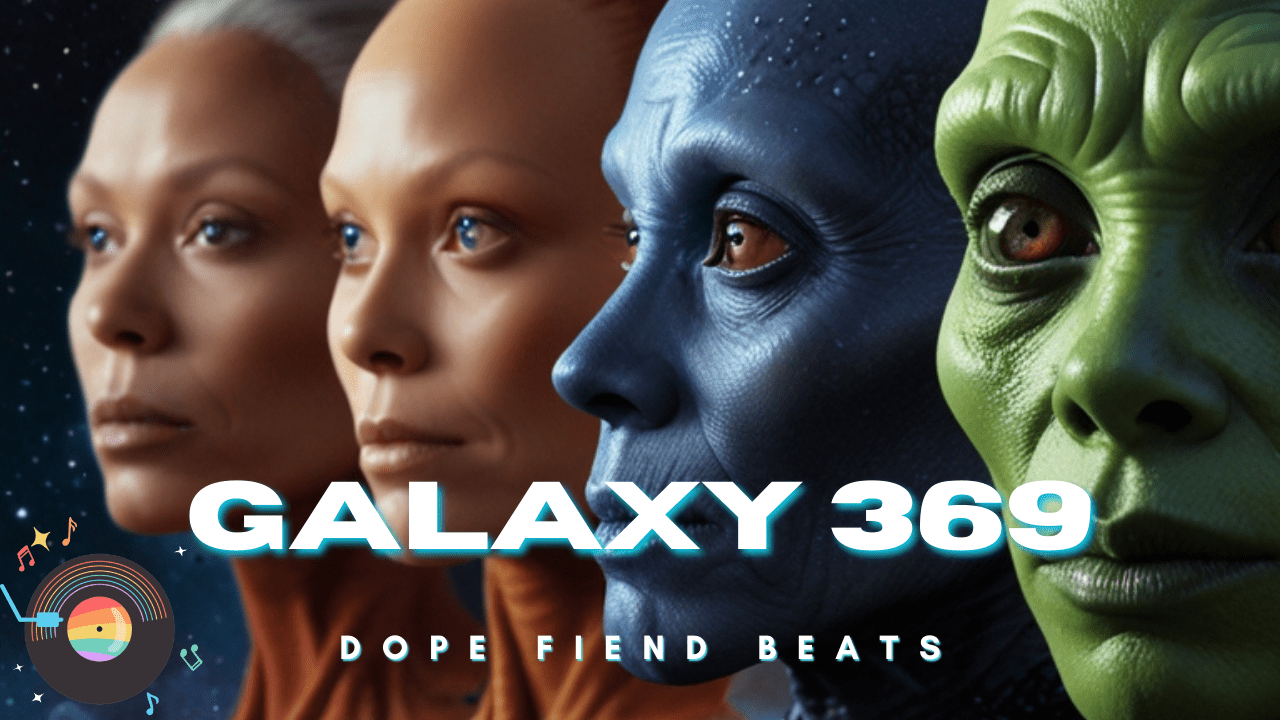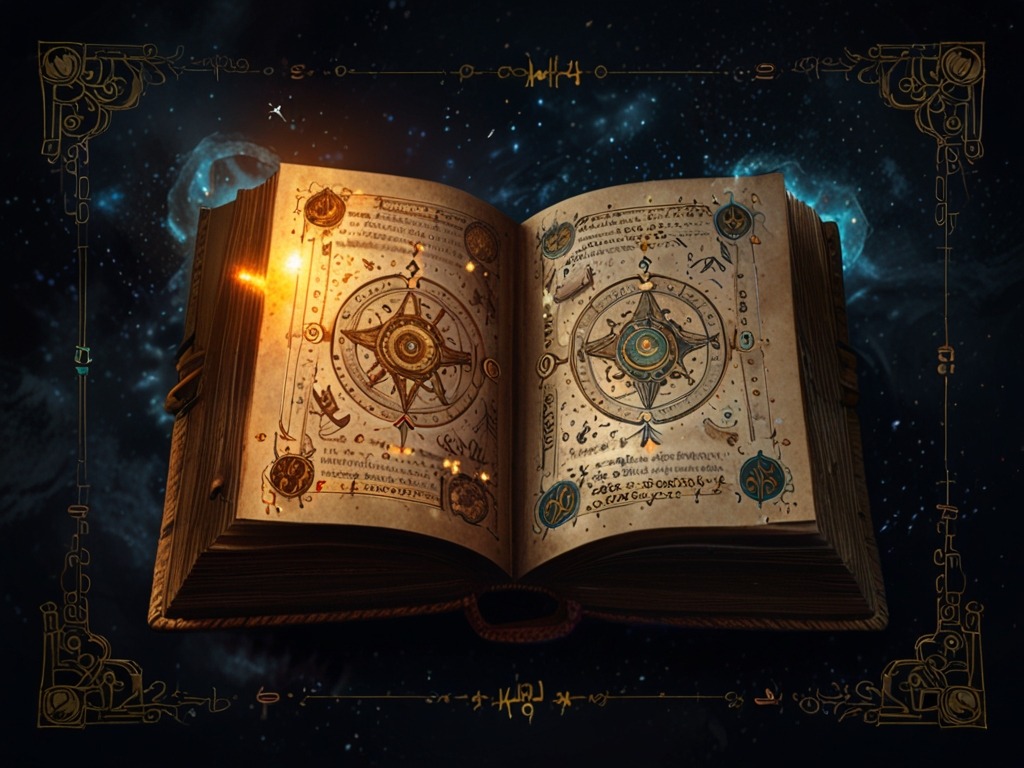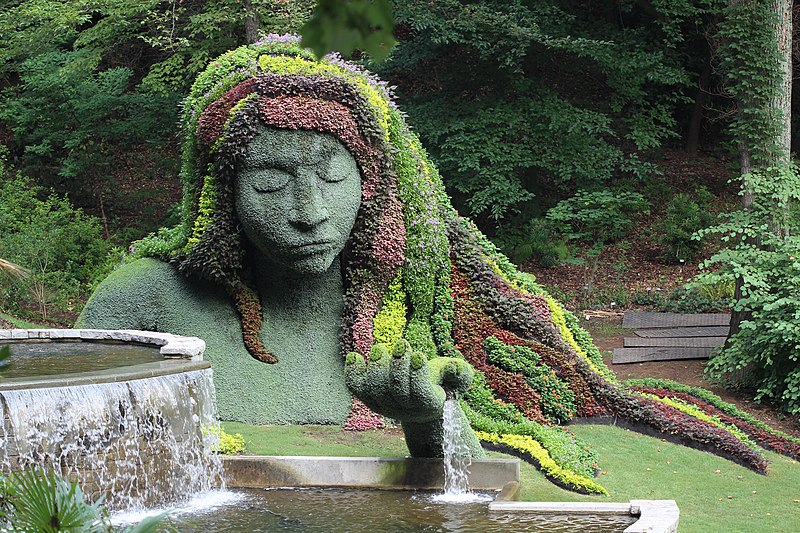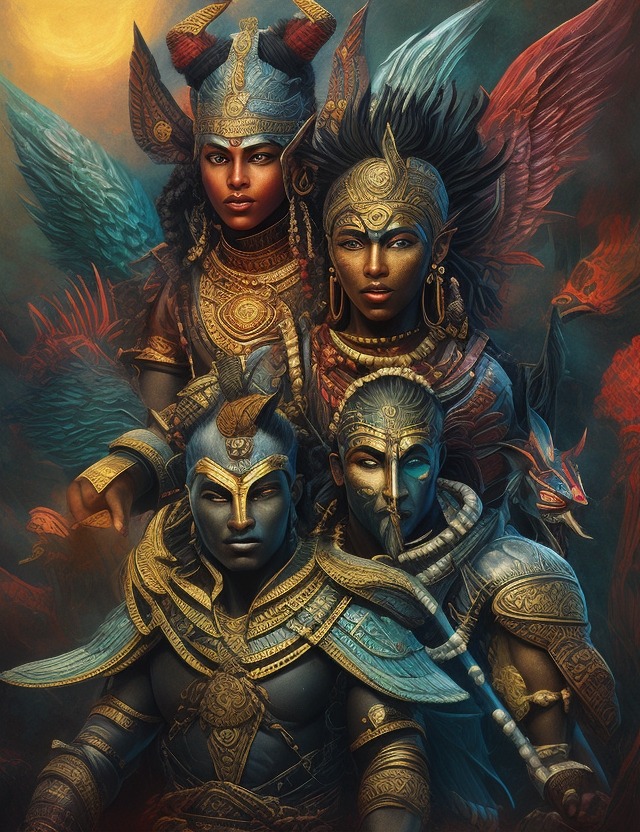The Power of Consciousness, Mindfulness, Awareness, and Gratefulness Our world is overflowing with information. with several stimuli competing for our attention at all times. It’s easy to feel overpowered and lost in a sea of information that frequently seems more like noise due to the constant news cycle and the constant notifications on our phones. We may feel caught in a type of artificial matrix that we have created for ourselves as a result of this continual barrage, estranged from both the outside world and ourselves. However, what if we ourselves hold the secret to breaking free from this digital cage rather than cutting-edge technology” What if awareness. gratitude. mindfulness. and consciousness are the keys to a more genuine, meaningful life? This article examines how these four components are interrelated, showing how their cultivation can result in a more contented and conscious existence while their lack exposes us to deceit. In order to demonstrate how these ideas are useful tools for negotiating the complexity of the modern world rather than merely abstract notions, we will examine both classical philosophical ideas and contemporary examples. Understanding Consciousness Consciousness is often defined as the state of being aware of and able to think about one’s own existence, thoughts, and surroundings. Philosophers throughout history, from Descartes to Kant, have grappled with the nature of consciousness. In ancient Hindu philosophy, consciousness is seen as the ultimate reality, with the material world being an illusion (Maya). This perspective invites us to examine the layers of our own consciousness and how it shapes our perception of reality. One way to conceptualize consciousness in the context of contemporary culture is as a lens through which we see the outside world. Our consciousness becomes hazy when we live life on autopilot, going through the motions without giving them any conscious thought, which causes us to misunderstand or misinterpret what we are experiencing. This mentality can produce a “simulated matrix,” in which we are cut off from both the outside world and our actual selves. The Role of Mindfulness Mindfulness is the practice of being present and fully engaged with the current moment, without judgment. It is rooted in ancient Buddhist traditions but has gained popularity in contemporary wellness practices. Mindfulness helps cultivate an acute awareness of our thoughts, emotions, and surroundings. When we practice mindfulness, we develop a clearer consciousness, allowing us to recognize the patterns of thought and behavior that may deceive us. For example, in a workplace setting, a mindful employee is more likely to notice when stress levels are rising or when they are becoming disengaged. This awareness enables them to take proactive steps to address these issues rather than simply reacting to them. Conversely, when mindfulness is absent, we may fall victim to distractions, misunderstandings, or negative thought patterns. A common modern example is the prevalence of social media, which often feeds us curated images of others’ lives that can lead to feelings of inadequacy or envy. Without mindfulness, we might unconsciously compare ourselves to these idealized versions of reality and lose sight of our own unique journey. GET YOUR COPY TODAY Awareness: The Key to Perception Awareness is closely related to consciousness and mindfulness but has its own distinct implications. It involves recognizing and understanding the internal and external stimuli that influence our thoughts and behaviors. Awareness helps us identify biases, assumptions, and societal norms that can shape our perceptions, often in misleading ways. Philosopher Socrates famously stated, “The unexamined life is not worth living.” This adage underscores the importance of awareness in fostering a meaningful existence. In a world filled with information and noise, awareness allows us to discern truth from deception, enabling us to make informed decisions. In practice, increasing our awareness can be as simple as taking a moment to reflect on our thoughts and feelings. For instance, a person feeling overwhelmed by responsibilities may become aware of how their inner dialogue fuels their anxiety. By recognizing these patterns, they can challenge negative thoughts and replace them with more constructive narratives. Gratefulness: The Transformative Power Gratefulness, or gratitude, is the practice of recognizing and appreciating the positive aspects of our lives, no matter how small. This principle is deeply rooted in various philosophical and religious traditions, including Stoicism and Buddhism. Gratitude not only enhances our emotional well-being but also shifts our focus from what we lack to what we have. Research has shown that cultivating gratefulness can lead to improved mental health, greater resilience, and increased life satisfaction. When we practice gratitude, we effectively counteract feelings of resentment, envy, or dissatisfaction that can cloud our consciousness and awareness. In practical terms, this could involve keeping a gratitude journal where we regularly write down things we are thankful for. This simple act can shift our perspective and help us remain grounded during challenging times. For example, someone facing job insecurity might find solace in the support of friends and family, reminding them that they are not alone in their struggles. The Dangers of a Deceptive Reality When consciousness, mindfulness, awareness, and gratefulness are lacking, we risk falling into a deceptive reality. In this state, we might believe that our perceptions of the world are entirely accurate, failing to recognize the illusions that can cloud our judgment. This is particularly relevant in today’s age of misinformation, where social media, news outlets, and personal beliefs can skew our understanding of reality. A modern example is the spread of conspiracy theories, which often thrive in environments lacking critical thinking and awareness. When individuals are not mindful of the sources of their information and fail to cultivate an awareness of their cognitive biases, they may become susceptible to deceptive narratives that distort reality. Furthermore, the absence of gratefulness can exacerbate this issue. When we focus solely on what is wrong in our lives, we become blind to the beauty and opportunities around us. This narrow focus can lead to a negative feedback loop where our perception of reality becomes increasingly pessimistic and distorted. Bringing It
The Galactic Chronicles: The Lyran-Draconian Conflict
A fascinating blend of speculative history and cosmic storytelling, the Lyran-Draconian Conflict is a tale of ancient wars, alliances, betrayals, and the fight between light and darkness that many believe continues to influence Earth today. Below is a deeper dive into each element of this galactic drama, presented in an engaging and accessible manner for young learners and curious minds alike. 1. Initial Encounter & The First Orion War (387 Million Years Ago) The Lyrans, feline-like humanoids from Avyon, flourished in peace and harmony. Their society valued spirituality, technological innovation, and ecological balance. This utopia, however, was interrupted when the Draconians, a powerful reptilian species, invaded with unmatched aggression. Commanded by the ruthless Sauron, they sought dominance over Lyra’s abundant resources. Despite the Lyrans’ resistance, their advanced adversaries devastated the planet, enslaving survivors and scattering refugees across the galaxy. The Orion Wars forged a grim precedent of conflict, shaping galactic power dynamics. 2. The Sirian Solution & The Anunnaki Seeking resolution, the Sirians proposed creating a hybrid species, the Anunnaki, to embody strengths from both factions. These beings, designed as mediators, bore the Lyrans’ compassion and the Draconians’ might. While initially successful, internal strife among the Anunnaki soon mirrored the broader galactic conflict. Some factions championed peace and cooperation, while others succumbed to their Draconian lineage, pursuing power. This divergence weakened their unifying purpose, transforming them into unpredictable agents in the galactic theater of war and diplomacy. 3. Merlin, the Unifier, & an Era of Peace Merlin’s emergence was pivotal. Known as a spiritual revolutionary, he emphasized universal compassion and coexistence. His teachings helped unite fractured civilizations under Tiamat’s leadership, heralding an age of exploration, healing, and prosperity. Advanced technologies flourished, enabling interstellar travel and ecological restoration. Yet, Merlin’s vision was not universally embraced. Secretive groups like the Cabal resisted his principles, working covertly to destabilize unity. These factions planted seeds of future discord, ensuring that peace remained a fragile and fleeting dream. 4. Seeds of Future Conflict The Cabal, a shadowy alliance of hybrid families, manipulated galactic events from behind the scenes. Through political intrigue, they fueled tensions across star systems, including Mars and Maldek. These self-serving elites utilized advanced technology and psychological manipulation to incite rebellion and division. Their influence extended to Earth, where they sowed ideological conflict and suppressed humanity’s spiritual evolution. As their reach grew, they catalyzed a new era of hidden warfare, entrenching cycles of destruction and reshaping galactic dynamics. 5. The War in Heaven & the Destruction of Maldek The destruction of Maldek, a pivotal moment in galactic history, was the culmination of escalating tensions between warring factions. Maldek, a thriving planet situated between Mars and Jupiter, was once a hub of advanced civilization. Its societies were technologically sophisticated, with an intricate balance of energy systems that harnessed planetary and cosmic forces. However, internal conflicts, exacerbated by external interference, destabilized its peace. The War in Heaven, fueled by Anunnaki ambitions and power struggles, turned Maldek into a battleground. As alliances fractured and ideological divides deepened, the use of advanced weaponry reached catastrophic levels. Central to Maldek’s demise was the deployment of energy-based weapons capable of destabilizing planetary cores. These technologies, misused in desperation, triggered a chain reaction that tore the planet apart, scattering its remains into the asteroid belt. Maldek’s destruction had far-reaching consequences. The environmental shockwaves disrupted the delicate equilibrium of the solar system, influencing orbits and planetary climates. Energetically, the event left a scar on the solar system’s collective consciousness. Maldek’s inhabitants, many of whom were spiritually evolved, experienced immense trauma. Their souls were reincarnated on Earth, bringing karmic imprints of the destruction. These echoes of Maldek’s tragedy are believed to influence Earth’s recurring patterns of conflict and renewal. The event also served as a grim lesson in the dangers of unbridled technological advancement and ideological extremism. For many galactic civilizations, Maldek’s fall highlighted the importance of balancing technological progress with spiritual and ethical maturity. This tragedy continues to resonate as a cautionary tale within galactic narratives, offering insights into the cyclical nature of creation and destruction. Key Themes from Maldek’s Story Technological Overreach – The misuse of planetary-scale weaponry underscores the perils of unchecked innovation. Karmic Cycles – Maldek’s legacy persists in the souls of its reincarnated inhabitants, influencing Earth’s spiritual evolution. Galactic Ripples – The destruction altered the solar system’s dynamics and inspired alliances aimed at preventing similar events. Spiritual Awakening – The tragedy serves as a catalyst for reflection on unity, cooperation, and the dangers of division. 6. The Continuing Legacy The philosophical tensions originating from the Lyran-Draconian conflict persist in contemporary human struggles. Earth’s political, spiritual, and cultural divides often mirror the ancient ideologies of “service-to-self” versus “service-to-others.” Many believe this moment in human history offers an opportunity for transcendence, a chance to break the cycle of conflict. The legacy of these cosmic wars invites humanity to confront its shadow, embrace unity, and evolve collectively, potentially aligning with a broader galactic community. The Players Lyrans: Peaceful feline humanoids from Vega. Draconians: Ruthless reptilian conquerors from Alpha Draconis. Anunnaki: Hybrid peacekeepers with mixed loyalties. Merlin: Spiritual unifier spreading universal compassion. Cabal: Self-serving hybrid factions shaping hidden agendas on Earth. Themes to Explore Conflict vs. Cooperation: The battle between domination and unity. Spiritual Growth: The transformative power of universal love. Cycles of War and Peace: Galactic patterns repeating in human history. Dive Deeper For further exploration of this cosmic saga: “The Orion Wars and Galactic History” “The Sirius Connection to Earth’s Spiritual Evolution” “Maldek: The Lost Planet of Our Solar System” 1. Lyran-Draconian Origins and the Orion Wars Lyrans and Their Expansions: The humanoid Lyrans, originating from the Lyra constellation, are often described as the forebears of humanity in galactic lore. Their early civilizations colonized Vega and later expanded to Orion, Sirius, and other systems. They allied with Vegans, another humanoid group, and faced resistance from the reptilian Draconian Empire, which had a vast colonization network spanning Alpha Draconis, Zeta Reticuli, and Polaris. Conflicts over resources and territory in
Ancient Egypt’s Wisdom and Its Connection to the Hebrew Genesis
A Tale of Myths and Universal Truths What if I told you the stories we learn in history and religion might have roots in the myths of one of the world’s oldest civilizations—Ancient Egypt? The Egyptians were not just pyramid builders or skilled artists; they were incredible thinkers who tried to understand the mysteries of the universe through stories called myths. Throughout history, mythology has provided a framework for understanding the world, shaping our beliefs and behaviors. Among the most compelling mythologies are those of Ancient Egypt, which offer rich stories of creation, morality, and cosmic order. Interestingly, these narratives share profound parallels with the Hebrew Genesis, suggesting a tapestry of interconnected ideas that transcend cultures. Let’s explore how Ancient Egyptian wisdom resonates with the Genesis story and its universal themes. These myths were full of symbolism, representing forces of nature, human emotions, and cosmic struggles. Over thousands of years, this wisdom spread far and wide, influencing other cultures. One of the most fascinating connections can be found in the Hebrew Bible’s Genesis story. Let’s explore how the Egyptians shaped ideas about creation, life, and even morality. What Is Mythology, and Why Is It Important? Before science existed to explain things like why the sun rises or what causes thunder, humans relied on imagination. Mythology is like the first version of science and philosophy wrapped up in colorful stories. For example, when Egyptians wondered about the wind’s invisible strength, they didn’t call it “air pressure.” Instead, they said, “That’s Shu, the god of air, keeping the sky high above us.” But myths were more than just explanations. They also taught lessons about life, nature, and relationships. For the Egyptians, myths weren’t just stories—they were the foundation of how they viewed the world. Through their myths, they passed down knowledge from one generation to the next. Why Should We Care About These Myths Today? Even though Egyptian myths were created thousands of years ago, they are still relevant. They shaped other cultures, including Greek, Roman, and Hebrew traditions. Ancient Egyptian stories gave rise to many of the ideas in Genesis, such as the idea of a divine order, the fight between good and evil, and the creation of the world. The Origins of the Universe: From Chaos to Order In both Egyptian mythology and the Hebrew Genesis, creation begins in chaos. The Egyptians imagined a vast, formless abyss called Nun, a watery expanse containing infinite potential. Out of Nun emerged the first land, the Benben, on which the god Atum stood to initiate creation. Similarly, Genesis describes the Earth as “formless and empty,” with “darkness over the surface of the deep.” This watery void represents a state of unmanifested potential that God transforms through the act of creation. Egyptian Influence on Hebrew Genesis The Hebrew Bible’s Book of Genesis contains two creation accounts (Chapters 1-2) that have been compared to ancient Egyptian creation myths. Scholars have identified similarities and parallels between the two traditions. Similarities: Cosmogony: Both Egyptian and Hebrew creation accounts describe the creation of the world from a primordial chaos. In Genesis 1:2, the “earth was without form and void” (tohu wabohu), echoing the Egyptian concept of the universe emerging from a state of disorder. Divine Creation: Both traditions feature a divine creator god. In Genesis, Elohim (the Hebrew generic word for “god”) creates the heavens and earth, while in Egyptian mythology, the sun god Atum or the god Khnum are credited with creation. Creation of Humans: Both accounts describe the creation of humans. In Genesis 2:7, God forms Adam from dust, while in Egyptian mythology, the god Khnum creates humans from clay or mud. Differences: Monotheism: The Hebrew Bible presents a single, all-powerful God (Yahweh), whereas Egyptian mythology features a pantheon of gods and goddesses. Creation Methods: In Genesis, God creates through spoken words (Genesis 1:3-31) and direct action (Genesis 2:4-25), whereas Egyptian mythology often depicts creation through the actions of multiple gods and goddesses. Purpose of Creation: Unlike Egyptian mythology, which is about how the world is controlled by natural cycles and the balance of opposing forces, the Hebrew story is about how God made people in his own image (Genesis 1:26–27) and how God made a promise to live with people forever. Influence of Egyptian Mythology on Hebrew Bible Scholars have identified several parallels between Egyptian mythology and the Hebrew Bible, including: Yahuda’s Similarities: In the 1930s, scholar Benno Yahuda identified similarities between Genesis 1-2 and ancient Egyptian texts, including the creation of humanity and the use of symbolic language. Gordon’s Parallels: In 1982, Cyrus Gordon drew parallels between the Egyptian creation myth of Khnum and Genesis 2:4-25, highlighting the shared themes of creation and humanity. Hoffmeier’s Cosmology: In 1983, James Hoffmeier examined the similarities between Genesis 1-2 and ancient Egyptian cosmology, noting the shared concepts of creation, chaos, and the role of the creator-god. While the Hebrew Bible’s Genesis account is distinct from Egyptian mythology, it is clear that there are similarities and parallels between the two. The Hebrew account’s unique themes and tone, however, set it apart from Egyptian mythology. The Hebrew account differs from other traditions in its emphasis on monotheism, covenant, and rejection of Egyptian polytheism, despite sharing comparable themes and symbols. This complex interplay of influences and polemics reflects the dynamic cultural exchange and theological debate between ancient Israel and Egypt. Water as a Symbol of Potential Egyptian Mythology: Water signifies the primordial chaos from which life emerges. Genesis: Water acts as the foundation of creation, divided to form the heavens and the Earth. Both traditions emphasize a shift from disorder to structure, underscoring humanity’s deep need to impose meaning on the unknown. The Power of Light For the Egyptians, light was the ultimate symbol of life and order. Every morning, the sun god Ra was born, bringing light to the world. But this wasn’t an easy task—Ra had to battle the serpent Apophis, a creature of chaos and darkness, every single night. In Genesis, light also plays a starring role. It’s
Book Title: Goddess Sopdet and the Quest for Redemption – A Review
A Mythic Journey Between Light and Shadow About the Book In a world where the delicate balance between light and shadow is eternally threatened, one goddess stands between salvation and ruin. Goddess Sopdet and the Quest for Redemption weaves together cosmic mythology, ancient Egyptian lore, and a gripping tale of sacrifice and hope. Sopdet, the celestial goddess of Sirius, is called once again to descend from the stars and restore balance in a world teetering on the brink of chaos. A darkness, ancient and insidious, stirs in the mortal realm, threatening to consume both gods and men alike. With the help of a brilliant astronomer, a haunted priestess, and a noble warrior willing to give his life, Sopdet embarks on a perilous quest that will test the very limits of her divine power—and her humanity. But as they face the shadowy forces of Nechmet and unravel the mysteries of an even greater threat lurking in the void, Sopdet must confront her deepest fears and the echoes of her past failures. Will she overcome the darkness within and without? Or will the shadows that stir on the horizon claim the world? Why You’ll Love This Book Epic World-Building: Step into a realm where the gods walk among mortals, where cosmic forces clash, and where ancient Egypt’s most mysterious wonders come to life. Complex Characters: Follow the journey of a goddess grappling with her own divine nature, alongside a diverse cast of mortals bound by fate and choice. Themes of Sacrifice and Redemption: This is more than just a battle between good and evil. It’s about what we’re willing to sacrifice to protect the ones we love and how we find redemption in the most unexpected places. Cosmic and Mythological Intrigue: A story that draws on ancient myth while exploring the timeless struggle between light and shadow, order and chaos. What Readers Are Saying A breathtaking blend of mythology, cosmic adventure, and heart-wrenching emotion.”_ Kev Eisenhauer “Sopdet’s journey is a powerful reminder of the balance between light and darkness—both within and outside of us.”_ Valborg Kanazawa “A beautifully woven tale of sacrifice, faith, and the eternal dance of light and shadow.”_ Carla Madetoja Sneak Peek Excerpt: “The stars have always been our guide,” Sopdet said softly, her gaze drifting back to the night sky. “They’ve shown us the way forward, even in the darkest of times.”* About the Author As a lifelong explorer of mythology and cosmic themes, Steafon Perry has crafted Goddess Sopdet and the Quest for Redemption as the first book in the _Celestial Echoes_ series. With a passion for blending ancient lore with modern storytelling, Steafon creates stories that explore the timeless struggle between light and shadow, gods and mortals, and the cost of finding balance in an ever-changing world. Get Your Copy Today Join Sopdet on her epic quest for redemption! Available now in ebook and paperback formats.
Unraveling Mysteries: Exploring the Intricate World of Mythology
The Intricate World of Mythology Since the dawn of civilization, humanity has sought to make sense of the world around it. We’ve looked to the stars, the earth, and the mysteries of life and death. And in that quest for understanding, mythologies were born. From the immortal gods of ancient Greece to the awe-inspiring pantheon of Norse heroes, mythology is more than just a collection of stories. These tales represent the values, fears, and aspirations of cultures long past. They reveal a civilization’s heart, where human imagination interweaves with spiritual belief to create an intricate tapestry of divine beings, powerful symbols, and transformative quests. In this article, we delve into the ancient realms of gods and heroes, unraveling the timeless allure of mythology. We’ll explore not only the captivating stories but also the profound meaning behind these narratives that have shaped civilizations for centuries. If you are fascinated by the godlike figures of Greek mythology, enchanted by the daring adventures of Norse warriors, or intrigued by the godlike charaIf you are fascinated by the godlike figures of Greek mythology, enchanted by the daring adventures of Norse warriors, or intrigued by the godlike characters of Greek mythology. The brave adventures of Norse warriors, or the symbolic themes that run through these stories, this exploration will help you understand them better than ever. Whether it is the stories of Greek mythology, the brave adventures of Norse warriors, or the symbolic themes that run through these stories, this exploration will help you understand them better than ever before. This exploration will broaden your understanding of the mythological realm like never before by examining the symbolic motifs that run through these stories. The Purpose of Mythology: More Than Stories To truly appreciate the depth and richness of mythology, we must first recognize its purpose. Mythology is often described as a collection of traditional stories, but it’s much more than that. In its most profound form, mythology is a lens through which ancient cultures explained natural phenomena, human behavior, and the universe’s workings. In Greek mythology, for example, gods were not far away and untouchable; they were deeply involved in human affairs and felt all of our feelings, like love, anger, pride, and jealousy. When Zeus, king of the gods, tried to keep his power while dealing with a pantheon of rebelling gods, he had to use strength and cunning to stay in charge. In Norse mythology, by contrast, the gods know that their eventual destruction is inevitable. The narrative of Ragnarök, the prophesied end of the world, emphasizes the impermanence of life and the inevitability of death, but it also celebrates the courage to face doom with honor. Figures like Odin and Thor are revered not just for their power but for their willingness to fight even when they know they cannot win. In this, Norse myths speak to a deep cultural respect for bravery, endurance, and resilience in the face of seemingly insurmountable odds. Mythology, therefore, serves as a mirror for humanity. Through these tales, ancient civilizations could interpret and communicate their understanding of the world and their place in it. These stories became moral and spiritual guides, influencing societal values, ethics, and philosophies that continue to resonate today. Greek Mythology: Gods, Heroes, and Cosmic Battles Greek mythology is perhaps one of the most well-known and influential mythological systems in the world. Originating in ancient Greece, these myths feature a pantheon of gods who reside on **Mount Olympus** and rule over the human world with divine power. Zeus is in charge of the Olympian gods, whose story is at the heart of Greek legend. In this pantheon, each god or queen rules over a different part of life. Poseidon is the god of the sea and controls the waves and storms. Athena, the goddess of learning, helps people in war and peace. But these gods are not perfect. In Greek mythology, they have very human traits and often fight, fall in love, or try to get payback. These attempts to make the divine more like us show how flawed and contradictory people are. Among the most captivating figures in Greek mythology are the heroes—mortals or demigods who perform extraordinary feats. Hercules (or Herakles in Greek), with his famous Twelve Labors, stands out as the ultimate symbol of strength and perseverance. Perseus, who beheaded Medusa, and Theseus, who slew the Minotaur, are other classic examples of heroic figures tasked with impossible missions. But Greek mythology is not only about the triumphs of heroes. Tragic stories like that of Oedipus, who unknowingly fulfills a terrible prophecy by killing his father and marrying his mother, explore the themes of fate, free will, and the tragic inevitability of suffering. These tales underscore a deep cultural belief that, while humans may be able to achieve great things, they are ultimately subject to the whims of fate and the gods. Greek mythology also delves into profound cosmic battles and the origins of the universe. The Titanomachy, or the war between the Olympian gods and the Titans, is a foundational myth that represents the triumph of order over chaos as the younger gods led by Zeus overthrow their predecessors, the Titans. This battle for cosmic balance mirrors humanity’s eternal struggle for control over nature and the unknown. Further Reading The Influence of Greek Mythology on Modern Culture](https://www.britannica.com/topic/Greek-mythology) – [Twelve Olympian Gods and Their Powers](https://www.worldhistory.org/Olympian_Gods/) Norse Mythology: The Enduring Spirit of the North Norse mythology, with its rich storytelling tradition and dramatic themes, comes from the ancient Germanic peoples of Scandinavia. Like the Greeks, the Norse had their pantheon of gods, but the mood of these myths is darker and more fatalistic. The gods of Asgard—such as Odin, Thor, Loki, and Freyja—are brave and powerful, but they are also deeply flawed, just like their Greek counterparts. A defining characteristic of Norse mythology is its emphasis on the inevitability of death. The Vikings who told these stories lived in a harsh environment where life was often short and brutal. It’s no surprise that
Goddess Sopdet and the Quest for Redemption:
A Mythology-Based Fantasy of Light, Chaos, and Redemption Review
Unleashing Imagination: A Dive into the Fantastical Worlds of Fiction
Why Fiction? Fiction has always been an escape, a way to enter realms where the impossible becomes possible. The written word gives life to new worlds, where the boundaries of reality fade, allowing our minds to explore places we never thought existed. Whether you’re plunging into an epic battle between good and evil or embarking on a magical quest for an ancient relic, fiction unleashes the imagination, immersing readers in fantastical landscapes, mystical creatures, and stories of unparalleled adventure. In this article, we’ll dive into the allure of fiction—specifically the genre of fantasy—and explore why these imaginative worlds captivate readers across generations. From epic fantasy sagas to magical quests, we’ll take a closer look at the magic of storytelling and the journey fiction offers. So, grab your sword, mount your dragon, and get ready to embark on an adventure where your imagination is the only limit. The Power of Fiction: Escape and Exploration At the heart of every fiction story lies a simple but profound truth: humans are wired to tell and enjoy stories. From the earliest oral traditions to today’s sprawling fantasy series, storytelling has been an essential part of human culture. In fiction, especially the fantasy genre, we find a unique combination of escape and exploration that allows us to transcend the mundane and experience worlds vastly different from our own. Fantasy fiction, in particular, taps into our deepest desires to explore the unknown. Whether it’s traversing the vast landscapes of Middle-earth in J.R.R. Tolkien’s The Lord of the Rings or navigating the magical lands of Westeros in George R.R. Martin’s A Song of Ice and Fire, these stories offer more than just entertainment. They provide a space where readers can confront real-world issues—such as morality, power, and identity—through the lens of make-believe. These fantasy worlds often mirror our own but add layers of magic and myth, which create a safe space for readers to grapple with complex emotions and ideas. Source Links The Importance of Storytelling in Human Culture (https://www.bbc.com/culture/article/20170522-why-we-need-stories) – [Fantasy as a Reflection of Real-World Issues](https://www.tor.com/2020/05/13/how-fantasy-books-help-us-face-our-own-reality/) Epic Fantasy: Where Magic and Adventure Collide When it comes to fantasy fiction, the epic fantasy genre stands out as a favorite among readers. Defined by grand-scale storytelling, intricate world-building, and complex character arcs, epic fantasy transports readers into worlds filled with magic, mythical creatures, and legendary heroes. These stories often span multiple books and follow characters through quests that determine the fate of entire kingdoms, realms, or even worlds. A hallmark of epic fantasy is the hero’s journey, a narrative structure popularized by mythologist Joseph Campbell. The hero’s journey takes the protagonist on a transformative adventure, where they leave their ordinary world behind, face trials and tribulations, and ultimately return as a changed person. Classic examples include Frodo Baggins’ journey to destroy the One Ring in The Lord of the Rings or Harry Potter’s evolution from a boy wizard to the savior of the wizarding world in J.K. Rowling’s Harry Potter series. What makes epic fantasy so compelling is its blend of magic and adventure. In these stories, magic is not just a tool; it’s often a driving force that shapes the world and the characters’ destinies. Think of Gandalf wielding his staff to defeat the Balrog or Daenerys Targaryen commanding her dragons in battle. Magic in epic fantasy isn’t just background—it’s integral to the plot, adding layers of wonder, danger, and awe. Source Links [Joseph Campbell’s Hero’s Journey](https://www.theringer.com/2019/11/8/20949900/the-heros-journey-joseph-campbell-star-wars) – [Why Magic Matters in Fantasy Fiction](https://www.tor.com/2021/05/14/the-importance-of-magic-in-fantasy-worldbuilding/) Magical Quests: The Heart of Adventure Magical quests are another key element of fantasy fiction that taps into readers’ love for adventure. These quests are often driven by a central mission—a powerful artifact must be retrieved, an evil sorcerer must be defeated, or a lost kingdom must be restored. These quests, while fantastical, are also deeply personal, pushing the protagonists to confront their fears, test their strengths, and discover their true potential. One of the most iconic magical quests is the search for the Holy Grail, which has been reimagined in countless fantasy tales. In modern fiction, magical quests take many forms. Consider Percy Jackson, the modern-day demigod who must embark on a journey to recover Zeus’s lightning bolt in Rick Riordan’s Percy Jackson and the Olympians series. Or the quest for the Deathly Hallows in Harry Potter, where Harry, Hermione, and Ron must find three powerful magical objects to defeat Lord Voldemort. These magical quests serve as metaphors for growth and self-discovery. Characters are forced to confront their weaknesses, challenge the status quo, and make difficult choices that shape not only their fate but the fate of the world around them. Readers love these stories because they represent the ultimate form of escapism—where an ordinary person is thrust into an extraordinary situation and emerges stronger and wiser for it. Source Links [The Heroic Quest in Fantasy Literature](https://www.nytimes.com/2016/03/27/books/review/the-heroic-quest-in-fantasy-literature.html) – [How Percy Jackson Revolutionized Modern Fantasy](https://www.tor.com/2020/09/24/how-percy-jackson-redefined-fantasy-for-a-new-generation/) Fantastical Worlds: Crafting the Unimaginable One of the greatest joys of reading fantasy fiction is the chance to explore fantastical worlds—vast landscapes that are unlike anything found in the real world. These worlds are crafted with care, with every detail—whether it’s a mystical forest, a floating city, or an enchanted castle—designed to draw readers deeper into the story. World-building is one of the most important aspects of fantasy fiction. Authors like J.R.R. Tolkien, George R.R. Martin, and Brandon Sanderson have become masters of this art, creating immersive worlds that feel alive with history, culture, and complexity. In The Lord of the Rings, Middle-earth is so meticulously developed that it feels like a real place, complete with detailed maps, languages, and mythologies. Similarly, Martin’s A Song of Ice and Fire transports readers to the political intrigue of Westeros, where noble families vie for power in a sprawling epic filled with betrayal, magic, and dragons. What makes these worlds so immersive is not just their scale but their complexity. Good world-building doesn’t just create a beautiful backdrop for the story—it also influences the plot, characters, and conflicts. In Mistborn, for example, Brandon
Secret Decoded: Exploring the Esoteric Realm
Esoteric realm The term Esoteric Realm conjures images of hidden wisdom, spiritual mystery, and paths less traveled. Esoteric traditions, often shrouded in secrecy, are repositories of ancient knowledge that challenge mainstream religious and cultural narratives. From Hermetism to Kabbala, these traditions explore the depths of human spirituality, promising profound transformation for those bold enough to seek them out. What is the Esoteric Realm? The Esoteric Realm encompasses a collection of religious and spiritual traditions that have historically been marginalized or excluded from mainstream society. The term esoteric comes from the Greek word esōterikos, meaning “inner” or “hidden.” These paths share a common theme of imparting spiritual wisdom to a select group of initiates, often through metaphor, symbolism, and coded language. Emerging as a formal concept in 19th-century Western Europe, esotericism became a way to categorize traditions like Hermetism, Kabbala, Rosicrucianism, ceremonial magic, alchemy, and astrology, all of which trace their roots back to far earlier periods. While these paths may differ in practice, they are unified by a focus on personal spiritual growth, hidden knowledge, and mystical transformation. Key Characteristics of the Esoteric Tradition 1. Hidden Knowledge Esoteric traditions hold that true wisdom cannot be easily grasped by the uninitiated. Knowledge is often kept secret, reserved for those who have proven their readiness. This hidden knowledge, called gnosis, is believed to unlock deeper understanding of the universe, human existence, and the divine. 2. Symbolism and Metaphor Symbols and metaphors are the lifeblood of esoteric traditions. Whether in sacred texts or rituals, these elements serve as keys to higher truths. For example, the serpent in alchemy represents transformation, while the Tree of Life in Kabbala symbolizes the structure of the cosmos and the human soul’s ascent to divine unity. 3. Initiatory Structure Many esoteric traditions rely on a structured path of initiation, where individuals progress through levels of spiritual understanding. Each stage reveals more profound teachings, often through rites or rituals. This structure emphasizes the importance of gradual, experiential learning. 4. Focus on Spiritual Growth At the heart of esoteric teachings is the concept of personal evolution. Unlike many mainstream religions that emphasize external salvation, esoteric paths focus on inner transformation, where individuals seek higher states of consciousness and ultimate self-realization. Examples of Esoteric Traditions Hermetism Rooted in the ancient Greek world, Hermetism emphasizes dualities—light and dark, good and evil—believing in their unity through spiritual knowledge or gnosis. Practitioners seek to understand the divine order of the universe, often through study and meditation. Kabbala A Jewish mystical tradition, Kabbala decodes the hidden meanings of sacred texts. It views existence as a manifestation of divine energy and focuses on achieving a direct spiritual union with the divine. Central to Kabbalistic teaching is the Tree of Life, which represents the journey of the soul toward divine light. Rosicrucianism A mystical society with roots in 17th-century Europe, Rosicrucianism combines alchemy, astrology, and spiritual enlightenment. Its secretive members are said to possess esoteric knowledge about the cosmos, immortality, and the hidden forces of nature. Theosophy Founded in the 19th century by Helena Blavatsky and Henry Steel Olcott, Theosophy blends ancient wisdom from the East and West. It seeks to unveil the mysteries of existence, promote the universal brotherhood of humanity, and explore the soul’s journey through reincarnation and spiritual evolution. Modern Expressions of the Esoteric Tradition New Age Movement In the late 20th century, the New Age movement embraced many esoteric concepts, emphasizing personal growth, self-awareness, and the awakening of higher consciousness. It borrows from diverse spiritual traditions, integrating practices like meditation, energy healing, and astrology to encourage inner transformation. Esoteric Online Communities The digital age has birthed a new generation of seekers. Forums, websites, and social media groups dedicated to esotericism flourish online, where individuals share insights, decode spiritual symbols, and debate the nature of existence. Challenges and Controversies Lack of Academic Recognition Esoteric traditions often face marginalization in academic circles. They are sometimes dismissed as pseudoscience or irrational beliefs, which leads to their exclusion from serious scholarly study. As a result, these traditions remain misunderstood or oversimplified in popular culture. Critiques of Esotericism Skeptics argue that esotericism’s reliance on secret knowledge and mystical experiences lacks empirical grounding. Some see these traditions as escapism, providing an illusion of wisdom that fails to hold up to scientific scrutiny. Interpretive Diversity One of the more intriguing aspects of esotericism is the vast diversity of interpretations. Symbols and teachings often carry multiple meanings, leading to debates and disputes even among practitioners. The varied interpretations add depth but also pose challenges for cohesion within esoteric communities. Esoteric Reflections on Free Will and Determinism The question of free will versus determinism has been explored deeply in esoteric traditions. Many of these paths suggest a blend of both—while destiny may guide the arc of the universe, individuals possess the power to shape their spiritual evolution through choices and actions. The alchemical phrase “As above, so below” hints at this interplay between cosmic forces and personal will. Esotericism, Occultism, and Magic: Drawing Distinctions While esotericism and occultism often overlap, esotericism tends to focus more on hidden spiritual truths, while occultism leans into practical magic and the manipulation of hidden forces. Modern magical practices, often popularized by movements like Wicca, also share roots in esoteric teachings but emphasize rituals, spells, and nature worship more overtly. The Role of the Feminine in Esotericism Feminine principles play a significant role in many esoteric traditions. Whether through goddess worship or the veneration of the divine feminine, figures like Isis in Egypt or Sophia in Gnosticism represent wisdom, creation, and nurturing power. These archetypes often embody the mystical connection between spirit and matter, highlighting the balance between masculine and feminine energies. The Divine Feminine Principle in esotericism is a powerful and deeply symbolic concept that represents the nurturing, creative, and intuitive aspects of the universe. While mainstream religious traditions often focus on patriarchal figures like God the Father, esoteric traditions recognize a balance of both masculine and feminine forces, reflecting the duality and unity within creation.
Is God a Woman?: Veneration of Celestial Goddesses
Divine Feminine: Veneration of Mother Goddesses The question of whether or not to refer to God as ‘Mother’ is not limited to radical theologies and church traditions anymore; it is a topic that has gained attention across various theological perspectives In the realms of ancient mythology, gods and goddesses have long captivated the human imagination. Their stories, rituals, and symbolism provide us with a glimpse into the beliefs and values of ancient civilizations. One intriguing aspect of this mythology is the veneration of Mother Goddesses. In this article, we will embark on a journey to explore the gender roles of these powerful deities and delve into the significance of their worship. Join us as we uncover the mysteries of the divine feminine in ancient Near Eastern cultures. Before we dip our toe, let us be instilled with the truth that there is no God greater than self for you are what God has made. Unveiling the Divine Feminine The biblical creation story of Genesis tells us that God created humankind in his own image, both male and female. This binary representation suggests that the divine possesses both masculine and feminine characteristics. While the focus has often been on the masculine aspect of God, it raises the question: could God also be depicted as a woman? In our research, we aim to analyze the gender roles of ancient Near Eastern goddesses who were frequently portrayed as consorts to prominent male gods in the religious pantheons. Revealing Christos-Sophia: A Spiritual Journey to Ascension In the realm of spiritual exploration, the Christos-Sophia path unveils the sacred union of masculine and feminine energies, paving the way for spiritual Ascension. This blog post delves into the key elements of this profound journey. Christos-Sophia: The Perfect Union Christos-Sophia embodies the perfected Law of Gender, harmoniously uniting sacred masculine and feminine forces. It guides us on an inner quest, leading to the discovery of the divine spark within our Sacred Crystal Heart. Base 12 Blueprint: Cosmic Harmony The divine blueprint, encoded in the base 12 mechanics of the Christos Blueprint, orchestrates the unified masculine and feminine consciousness. Known as Kryst-Krystallah, this universal architecture aligns energies across timelines and densities. Sophianic Body Restoration The reunion of Cosmic Aurora Christos and Mother Sophia marks the commencement of Sophianic Body correction. This sacred marriage signals the restoration of the material body, inspiring a spiritual reawakening. Overcoming Challenges: Anubian Black Heart Challenges stemming from the distortion of Christos-Sophia’s unification principle include the Anubian Black Heart networks and Alien Implants. Overcoming these hurdles is crucial for humanity’s evolution. Spiritual Union: The Divine Blueprint The Spiritual Marriage mathematical pattern, with its 13:13 Female Spin and 12:12 Male Spin, holds the key to genuine spiritual union. As the Krystal Star Frequencies return, the template for Hieros Gamos manifests. Personal Christ: Wholeness Reclaimed The Personal Christ, reintegrated throughout 12 Planetary Time Cycles, embodies the Krystallah eternal lightbody template. This reclamation, initiated in 2018, marks a transformative journey toward personal and collective wholeness. Tracing the Goddesses’ Names and Features To conduct our analysis, we delved into mythological stories, biblical texts, and archaeological sources to trace the variations in the names and features of the goddesses. Let’s start with a look into these three goddesses: Asherah (Ugaritic), Anat (Ugaritic), and Ishtar (Sumerian)/Inanna (Akkadian and Hittite). Through our comparative study, we discovered that these goddesses possess both masculine and feminine characteristics. This observation supports the argument that these female consorts may have been an expression of the chief male deity’s feminine side. While our analysis covers only a small portion of the ancient Near Eastern deities, it showcases the wide range of emotions and roles associated with mother goddesses. Isis: In Egyptian mythology, Isis is one of the most revered goddesses, known for her diverse roles and profound significance: Goddess of Magic and Wisdom: Isis is associated with magic, occult knowledge, and wisdom. She is believed to possess great magical abilities and is revered as a powerful sorceress. Isis is often depicted with a headdress or crown symbolizing her connection to knowledge and her role as a wise and skilled magician. Goddess of Motherhood and Fertility: Isis is also venerated as a maternal deity and a symbol of fertility. She is considered the ideal mother, protective and nurturing. In Egyptian mythology, Isis is known for her devotion to her son Horus, and her role as a mother figure is highly revered. Protector and Healer: Isis is recognized as a protector and healer. She has the ability to restore health and well-being, and her worship often involved seeking her assistance in matters of physical and spiritual healing. Isis was believed to possess the power to cure ailments and ward off evil. Goddess of the Afterlife: Isis plays a crucial role in the mythology surrounding the afterlife. She is associated with resurrection and the pursuit of eternal life. Isis played a pivotal role in the story of Osiris, her husband and brother, assisting in his resurrection and ensuring his place in the afterlife. Symbol of Divine Queenship: Isis is seen as the embodiment of divine queenship and the ideal Egyptian queen. She represents the epitome of femininity, wisdom, and power. Isis is often depicted wearing the throne-shaped headdress, symbolizing her role as a queen and her connection to the pharaohs. Goddess Ishtar on an Akkadian Empire seal, 2350–2150 BCE. She is equipped with weapons on her back, has a horned helmet, is trampling a lion held on a leash and is accompanied by the star of Shamash. Both Ishtar and Isis hold multifaceted roles and possess great significance in their respective mythologies. They embody a range of qualities, from love and beauty to power and protection. Their influence extends beyond their individual stories, shaping the cultural and religious practices of their civilizations. What role does Ma’at play? Ma’at, the ancient Egyptian concept of Ma’at is a fundamental and influential concept in Egyptian mythology and society. Let’s explore the role that Ma’at plays in Egyptian culture: Ma’at as a Concept: Ma’at represents the
Enki and Ninmah: The Sumerian Tapestry of Humankind Creation
The Tale of Humankind Genesis Enki, Enlil, Ninmah, and Ninhursag[/caption] Dive into the depths of Sumerian mythology, where Enki and Ninmah, distinct from the Enki and Ninhursag myth, converge in a riveting narrative detailing the origins of humankind. Let’s embark on an extended exploration of this mesmerizing creation myth. Enki and Ninmah, distinct from the Enki and Ninhursag myth: In the myth of Enki and Ninmah, Enki is portrayed as referring to Ninmah as his sister, distinct from the Enki and Ninhursag narrative where Ninhursag is usually considered Enki’s wife. Dina Katz highlights that contrary to the usual depiction of Ninhursag and Damgalnuna as the same goddess in Enki and Ninhursag, Enki and Ninmah treat them as separate deities. The myth involves Enki engaging in a contest with Ninmah, challenging each other in a creature-making competition. This story is a Sumerian creation myth that explains the origin of humankind from clay. Related queries: Ninhursag association with other Mother Goddesses Sumerian creation myths Enki and Ninhursag in Mesopotamian literature Significance of Ninhursag in Sumerian religion Comparison between Enki and Ninhursag myths Ninhursag Who or what exactly do Enki and Enlil represent in pre- … Potter of Mankind, Ninmah Ninti Isis Hera Juno Aruru – YouTube Sumerian Ninhursag or Mami – frauen-1500-bc Jimdo-Page! Enlil becomes Enki and Ninlil becomes Ninhursag Enki and Ninhursag Mythologies of the Ancient World by RYAN MOORHEN Distinguishing Deities Enki and Ninmah, often confused with Enki and Ninhursag, share common deities. Ninmah, synonymous with Ninhursag, takes center stage in the Sumerian creation myth. It unfurls the intricate tapestry of crafting humankind from the very clay that binds the earthly realm. The Sumerian civilization is one of the earliest known civilizations in human history, and their myths and legends have been passed down through the centuries. One of the most fascinating Sumerian myths is the story of Enki and Ninmah. This myth is not to be confused with another Sumerian myth featuring Enki and Ninhursag, although the two stories do share some similarities. In the myth of Enki and Ninmah, the Sumerian deities Enki and Ninmah are responsible for creating humankind from clay. According to the story, the gods had grown tired of doing all the work themselves and decided to create a race of beings to do their bidding. They first created seven men, but these men were unable to reproduce and so the gods created seven women to be their companions. Together, the men and women populated the earth and became the ancestors of all humankind. However, the story of Enki and Ninmah goes beyond just the creation of humankind. It also explains the origins of several deformed versions of humans. In the myth, Enki and Ninmah create a variety of humans with different physical traits, including one with no limbs, one with no ears, and one with no eyes. The gods were not pleased with these creations and eventually destroyed them, but the story serves as a cautionary tale about the dangers of playing god. Overall, the myth of Enki and Ninmah provides a fascinating glimpse into the beliefs and values of the ancient Sumerians. It highlights their fascination with creation and their belief in the power of the gods. Today, the story continues to captivate and inspire people around the world, reminding us of the enduring power of myth and the human imagination. Understanding the Sumerian Tapestry The Sumerians, residing in ancient Mesopotamia/Iraq, were pioneers in various fields, including writing, mathematics, and astronomy. Their myths, often inscribed on cuneiform tablets, provide a unique window into their worldview. The tale of Enki and Ninmah unfolds within this cultural and historical context, offering insights into their beliefs about the origins of life. Enki: The Wise Craftsman of Creation God of Wisdom and Water Enki, revered as the god of wisdom, was also associated with the life-giving waters. This duality reflected the Sumerians’ deep connection with the fertile land between the Tigris and Euphrates rivers. Crafting Humans from Clay The myth narrates Enki’s role in shaping the first humankind. With the clay of the earth, or to say from the existing sustenance of earth. Enki, the master craftsman, molded humankind, instilling them with the lack of essence of divinity. Ninmah: The Nurturer and Creatrix Goddess of Birth and Fertility Ninmah, often depicted as a nurturing mother figure, played a vital role in the birthing and nurturing of artificial life. Her association with fertility and creation made her a revered goddess. Collaboration with Enki The myth underscores the collaboration between Enki and Ninmah in the creation of humankind. Humankind, kind of like a human. This partnership symbolizes the disharmony between wisdom and nurturing forces in the cosmic order. Unraveling the Cosmic Threads Symbolism of Clay The use of clay in the creation of humans holds profound symbolism. It signifies the earthly nature of humanity and the interconnectedness between the divine and the material world. Divine Collaboration Enki and Ninmah ‘s collaboration emphasizes the belief in a balanced cosmic order where both wisdom and nurturing energies contribute to the creation and sustenance of artificial life. The Relevance Today Reflections on Creation Myths Exploring ancient creation myths like that of Enki and Ninmah prompts us to reflect on our own beliefs about the origins of life. It invites a dialogue between ancient wisdom and contemporary understanding. Balance in the Modern World The collaboration between Enki and Ninmah serves as a timeless reminder of the importance of balance. In our fast-paced world, this myth encourages us to seek harmony between wisdom and nurturing qualities. Enki, Enlil, Ninmah, and Ninhursag 2[/caption] Divine Hierarchy and Labor Woes The myth introduces us to the Anunnaki, rulers of the underworld, and the Igigi, celestial gods. A discontented Igigi, burdened by toilsome tasks assigned by their leaders, turns to Enki, the god of water and wisdom, for solace. Namma, the primordial mother goddess of the sea, intervenes upon hearing their pleas, awakening Enki from his slumber. A Divine Bargain The Sumerian myth of “Enki and Ninmah” unveils a celestial drama sparked
